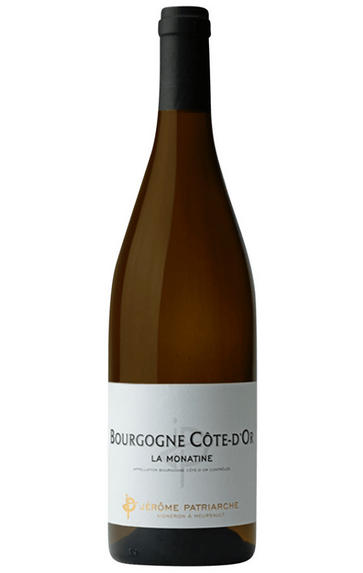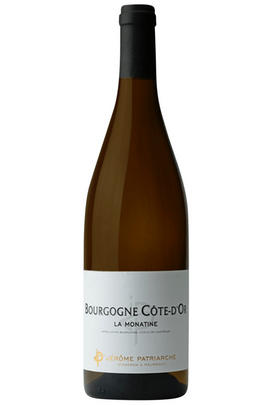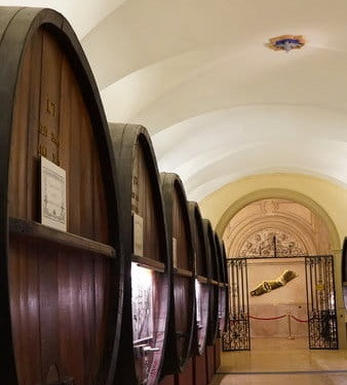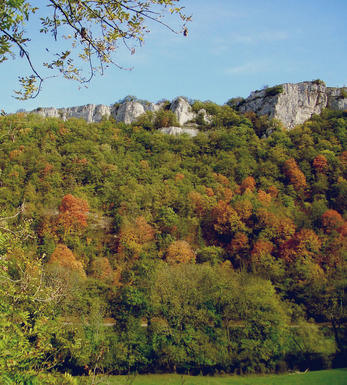
2020 Bourgogne Côte d'Or, La Monatine, Jérôme Patriarche

About this WINE

Jérôme Patriarche
Based in Meursault, a village in the Côte de Beaune region of Burgundy, Jérôme Patriarche produces white wines from Chardonnay grapes, mainly from the appellations of Meursault and Bourgogne Côte d’Or. He also makes a small amount of red wine from Pinot Noir grapes.
Jérôme Patriarche is known for his meticulous and organic approach to viticulture and vinification, respecting the terroir and the environment. He works with low yields, manual harvesting, natural yeasts, and minimal intervention in the cellar. His wines are aged in oak barrels, with moderate use of new wood, resulting in expressive, elegant, and balanced wines reflecting the character of each vineyard.
Some of Jérôme Patriarche's most acclaimed wines are:
Meursault Les Vireuils: A single-vineyard wine from a plot located above the village of Meursault, with a southeast exposure and limestone soil. This wine has a floral and fruity nose with hints of citrus, honey, and almond. The palate is fresh, mineral, and complex, with a long and creamy finish.
Meursault Les Charmes Dessus Premier Cru: A Premier Cru wine from a parcel situated in the heart of the Charmes vineyard, with a southwest exposure and clay-limestone soil. This wine has a rich and intense nose, with aromas of ripe pear, peach, vanilla, and toast. The palate is full-bodied, round, and powerful, with great depth and length.

Côte de Beaune
With its three musketeers of Chassagne-Montrachet, Puligny-Montrachet and Meursault, alongside the imperial Corton-Charlemagne, the Côte de Beaune is home to the finest Chardonnays in the world. It hosts seven of Burgundy's eight white Grands Crus, along with a single red Grand Cru. Ironically though, much more red wine is made in this southern half of the Côte d'Or than white.
Stretching 30km south past the town of Beaune to Cheilly-lès-Maranges, the Côte de Beaune has a more expansive feel and gentler slopes than the Côte de Nuits. Its finest Chardonnays are characterised by an incomparable intensity and complexity, while its Pinot Noirs generally have softness and finesse as their calling cards. The best reds come from Beaune, Pommard and Volnay, and the powerful Grand Cru of Corton.
As in the Côte de Nuits, the fragmentation of the Côte de Beaune's vineyards brings the single biggest hurdle for any wine lover, namely the unpredictability of its wine. The human factor is paramount, and sadly too many lazy or unscrupulous growers and merchants have produced disappointing wines from some of the region's greatest names, while their more talented and quality-minded neighbours craft exquisite examples from the same terroir. Happily, quality is now higher than it has ever been here and organic and biodynamic methods are increasingly popular – especially amongst the younger generation.
Wines labeled `Beaune' come from the appellation adjoining the town while those labeled Côte de Beaune (red or white) emanate from a group of vineyards on the hill above. Côte de Beaune Villages is a red wine that can be made from a number of lesser, named villages in the region, while Hautes-Côtes de Beaune (mostly red) is produced from vineyards in the hills to the west of the appellation, divided in two by St Romain. These tend to be light yet often fine wines, especially in hot years like 2003 and 2005.

Chardonnay
Chardonnay is often seen as the king of white wine grapes and one of the most widely planted in the world It is suited to a wide variety of soils, though it excels in soils with a high limestone content as found in Champagne, Chablis, and the Côte D`Or.
Burgundy is Chardonnay's spiritual home and the best White Burgundies are dry, rich, honeyed wines with marvellous poise, elegance and balance. They are unquestionably the finest dry white wines in the world. Chardonnay plays a crucial role in the Champagne blend, providing structure and finesse, and is the sole grape in Blanc de Blancs.
It is quantitatively important in California and Australia, is widely planted in Chile and South Africa, and is the second most widely planted grape in New Zealand. In warm climates Chardonnay has a tendency to develop very high sugar levels during the final stages of ripening and this can occur at the expense of acidity. Late picking is a common problem and can result in blowsy and flabby wines that lack structure and definition.
Recently in the New World, we have seen a move towards more elegant, better- balanced and less oak-driven Chardonnays, and this is to be welcomed.


Buying options
Add to wishlist
wine at a glance
Delivery and quality guarantee